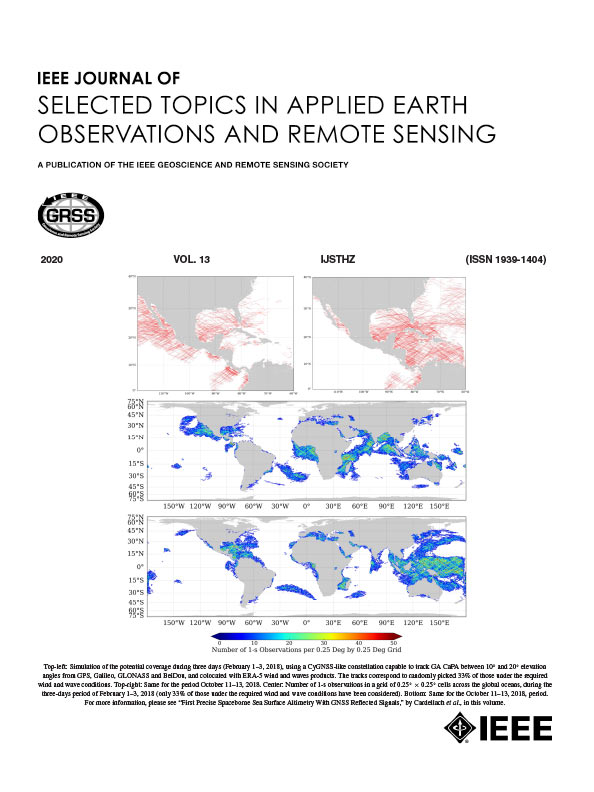Toward Better Accuracy-Efficiency Tradeoffs for Oriented SAR Ship Object Detection
IF 4.7
2区 地球科学
Q1 ENGINEERING, ELECTRICAL & ELECTRONIC
IEEE Journal of Selected Topics in Applied Earth Observations and Remote Sensing
Pub Date : 2025-03-27
DOI:10.1109/JSTARS.2025.3555330
引用次数: 0
Abstract
In oriented synthetic aperture radar (SAR) ship detection task, convolutional neural network based detectors have dramatically improved the detection performance, but enormous parameters make it difficult to realize model lightweighting. Recently, DETR and its variants have demonstrated excellent performance in object detection task, while model construction through linear layers has great potential in terms of model lightweighting. However, DETR-based models are rarely applied to oriented object detection task, while the network structure relies on manual experience and cannot be designed automatically. In this article, we propose a novel neural architecture search based lightweight detector in polar coordinate system with DETR as search space for oriented SAR ship detection, where oriented bounding boxes are encoded and decoded in polar coordinate system to cope with boundary discontinuity problems, and the weight entanglement strategy is adopted to realize automatic and lightweight design of DETR. Meanwhile, we design an oriented multiscale attention to alleviate the problem of sampling a large amount of background due to offset learning. Furthermore, we introduce a downsampling feedforward network to significantly reduce network floating point operations. Finally, we transplant FPDDet head as auxiliary head to improve encoder potential ship feature learning and decoder cross-attention learning. Experimental results show that our models not only achieve DETR lightweighting and real-time detection, but also improve detection performance. Our base models achieve state-of-the-art performance on both RSSDD and RSDD datasets compared to previous best models, with 1.36% and 2.28% improvement in mAP with 32.67 and 32.14 GFLOPs, respectively.面向SAR舰船目标检测的精度与效率权衡研究
在面向合成孔径雷达(SAR)舰船检测任务中,基于卷积神经网络的检测器显著提高了检测性能,但其参数过于庞大,难以实现模型轻量化。近年来,DETR及其变体在目标检测任务中表现出优异的性能,而通过线性层构建模型在模型轻量化方面具有很大的潜力。然而,基于der的模型很少应用于面向对象的目标检测任务,网络结构依赖于人工经验,无法自动设计。本文提出了一种新的基于神经结构搜索的极坐标系轻型探测器,以DETR为搜索空间用于定向SAR舰船检测,在极坐标系下对定向边界框进行编码和解码,以解决边界不连续问题,并采用权缠策略实现DETR的自动轻量化设计。同时,我们设计了一个定向多尺度注意力,以缓解由于偏移学习导致的大量背景采样问题。此外,我们引入了下采样前馈网络,以显着减少网络浮点运算。最后,我们移植FPDDet头作为辅助头,以改善编码器潜在船舶特征学习和解码器交叉注意学习。实验结果表明,我们的模型不仅实现了DETR的轻量化和实时性检测,而且提高了检测性能。与之前的最佳模型相比,我们的基本模型在RSSDD和RSDD数据集上都实现了最先进的性能,mAP分别提高了1.36%和2.28%,分别达到32.67和32.14 GFLOPs。
本文章由计算机程序翻译,如有差异,请以英文原文为准。
求助全文
约1分钟内获得全文
求助全文
来源期刊
CiteScore
9.30
自引率
10.90%
发文量
563
审稿时长
4.7 months
期刊介绍:
The IEEE Journal of Selected Topics in Applied Earth Observations and Remote Sensing addresses the growing field of applications in Earth observations and remote sensing, and also provides a venue for the rapidly expanding special issues that are being sponsored by the IEEE Geosciences and Remote Sensing Society. The journal draws upon the experience of the highly successful “IEEE Transactions on Geoscience and Remote Sensing” and provide a complementary medium for the wide range of topics in applied earth observations. The ‘Applications’ areas encompasses the societal benefit areas of the Global Earth Observations Systems of Systems (GEOSS) program. Through deliberations over two years, ministers from 50 countries agreed to identify nine areas where Earth observation could positively impact the quality of life and health of their respective countries. Some of these are areas not traditionally addressed in the IEEE context. These include biodiversity, health and climate. Yet it is the skill sets of IEEE members, in areas such as observations, communications, computers, signal processing, standards and ocean engineering, that form the technical underpinnings of GEOSS. Thus, the Journal attracts a broad range of interests that serves both present members in new ways and expands the IEEE visibility into new areas.

 求助内容:
求助内容: 应助结果提醒方式:
应助结果提醒方式:


